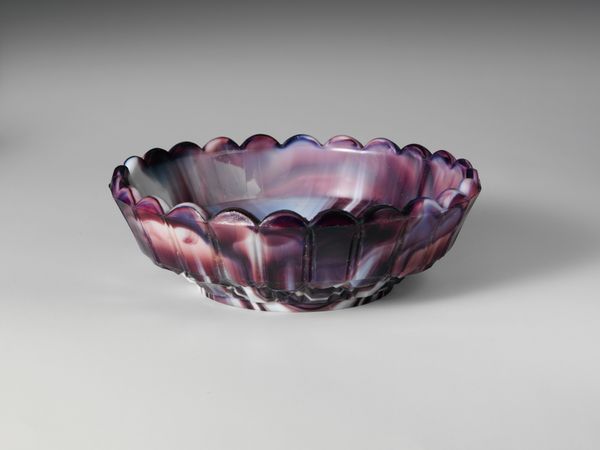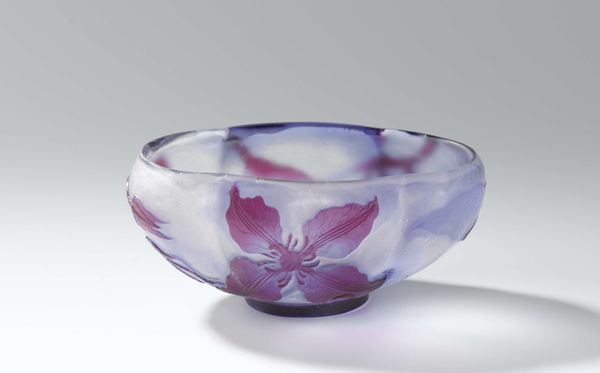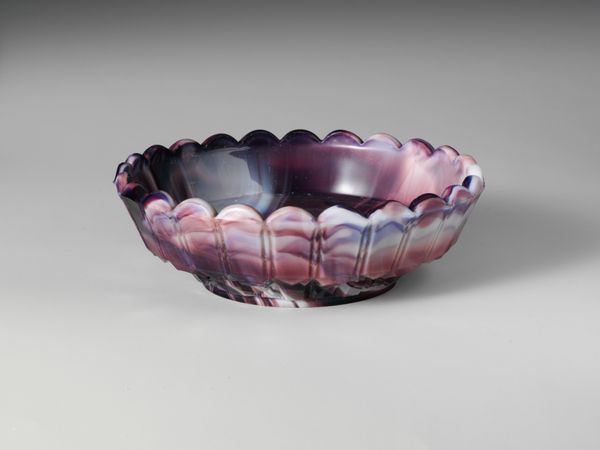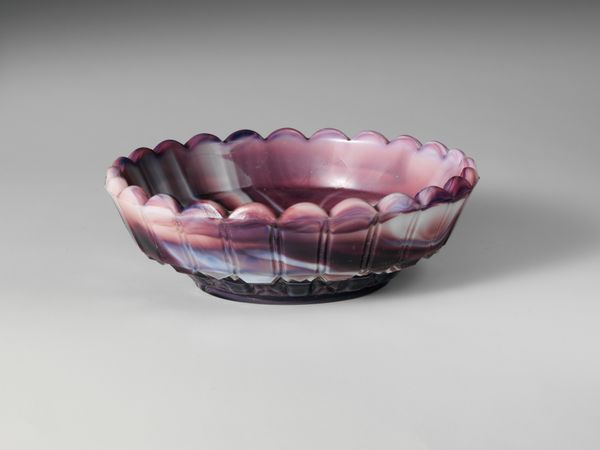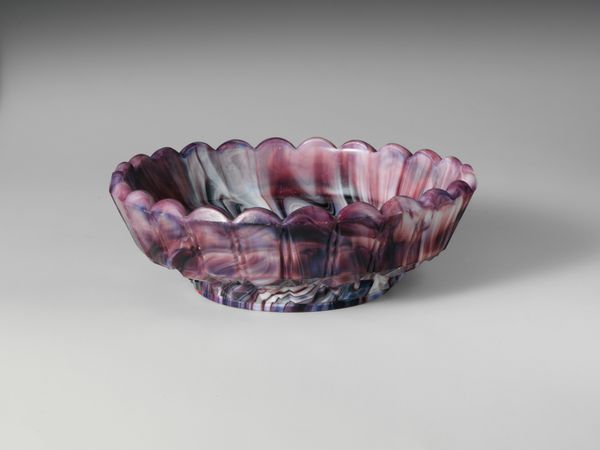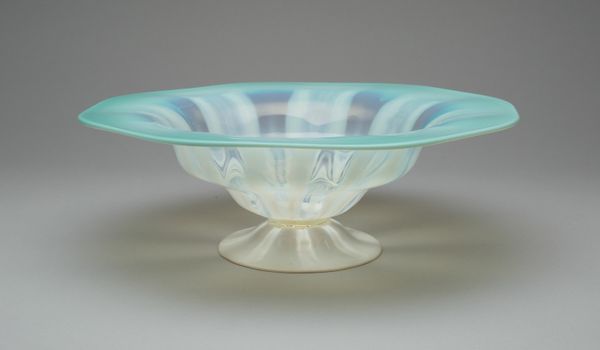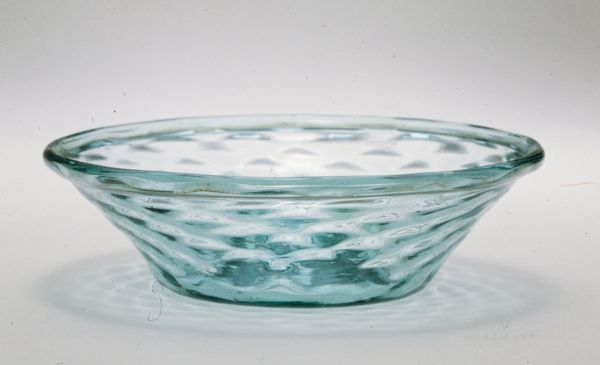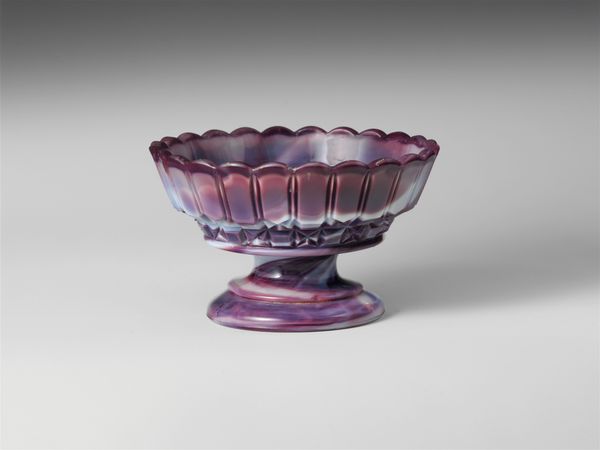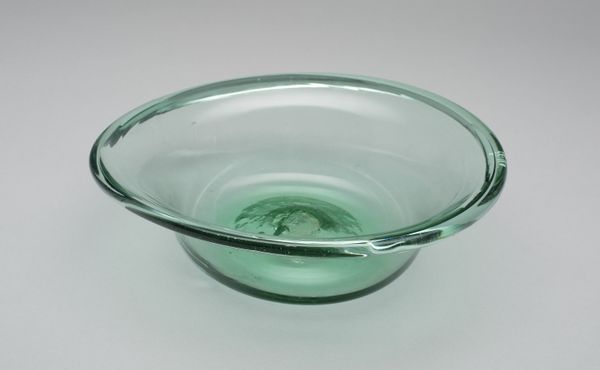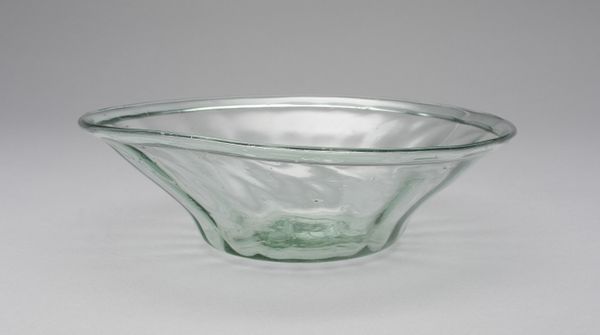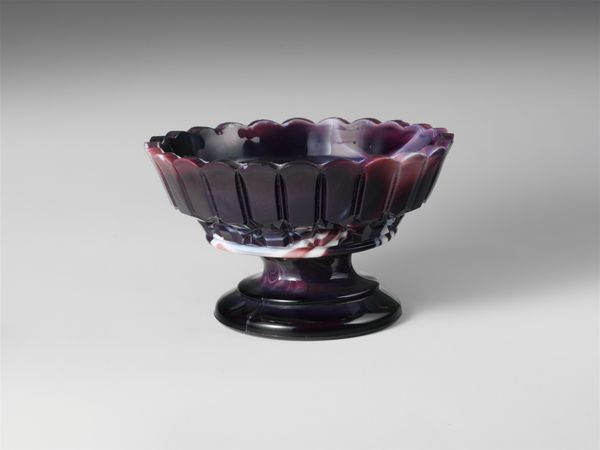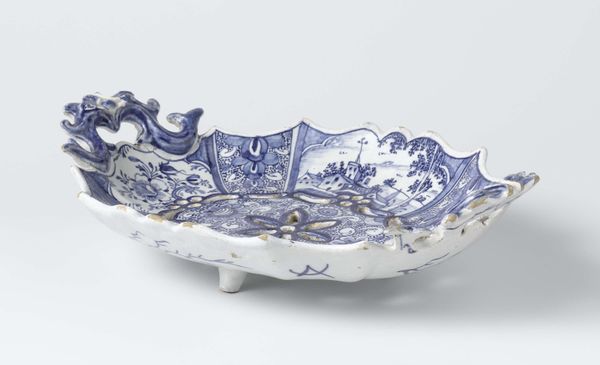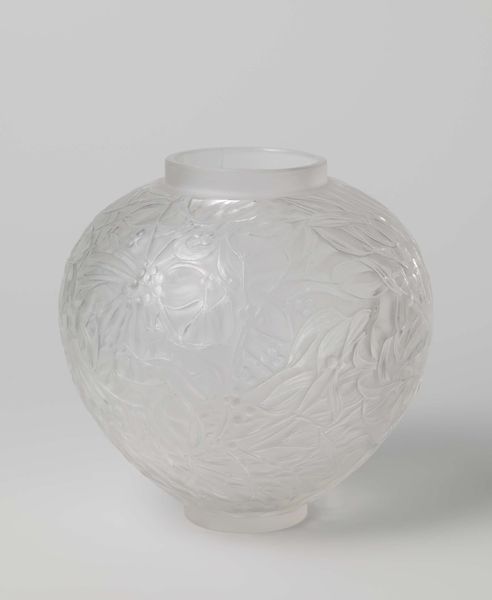
ceramic, glass
#
ceramic
#
glass
#
stoneware
#
ceramic
Dimensions: H. 4 1/2 in. (11.4 cm); Diam. 9 3/4 in. (24.8 cm)
Copyright: Public Domain
Editor: Here we have "Bowl," made sometime between 1870 and 1885 by Challinor, Taylor and Company. It is currently held at the Metropolitan Museum of Art. It's made of glass and ceramic. It’s incredibly delicate and feels almost ephemeral because of the swirling colors. What associations does it bring up for you? Curator: The colors are immediately evocative, aren't they? It’s interesting to think about the social and political climate in which this bowl was created. The late 19th century saw immense industrial growth alongside stark inequalities. Pieces like this, crafted with evident artistry, raise questions about the roles of labor and privilege. Editor: Privilege? How so? Curator: Well, who was able to afford such decorative objects? Who benefited from the economic system that allowed for the production and consumption of these luxury items? The bowl, with its delicate craftsmanship, serves as a visual reminder of a hierarchical society, doesn't it? It begs questions of social justice in production and in access, and about whose stories were not being told in art at the time. Editor: That’s a compelling perspective. I hadn't considered the class dynamics at play. Looking at it now, it seems less innocent and more like a statement, even if unintentional, of wealth. Curator: Precisely. It invites us to question the narratives that art often reinforces and to seek out alternative perspectives and marginalized voices from that same historical moment. Don’t you think? Editor: Absolutely, viewing it through the lens of social commentary definitely adds depth to its beauty and its role in society. Thanks, this changes my appreciation for such works. Curator: It challenges us to see beyond the surface and engage with the complexities of the past, informing our present and future.
Comments
No comments
Be the first to comment and join the conversation on the ultimate creative platform.
